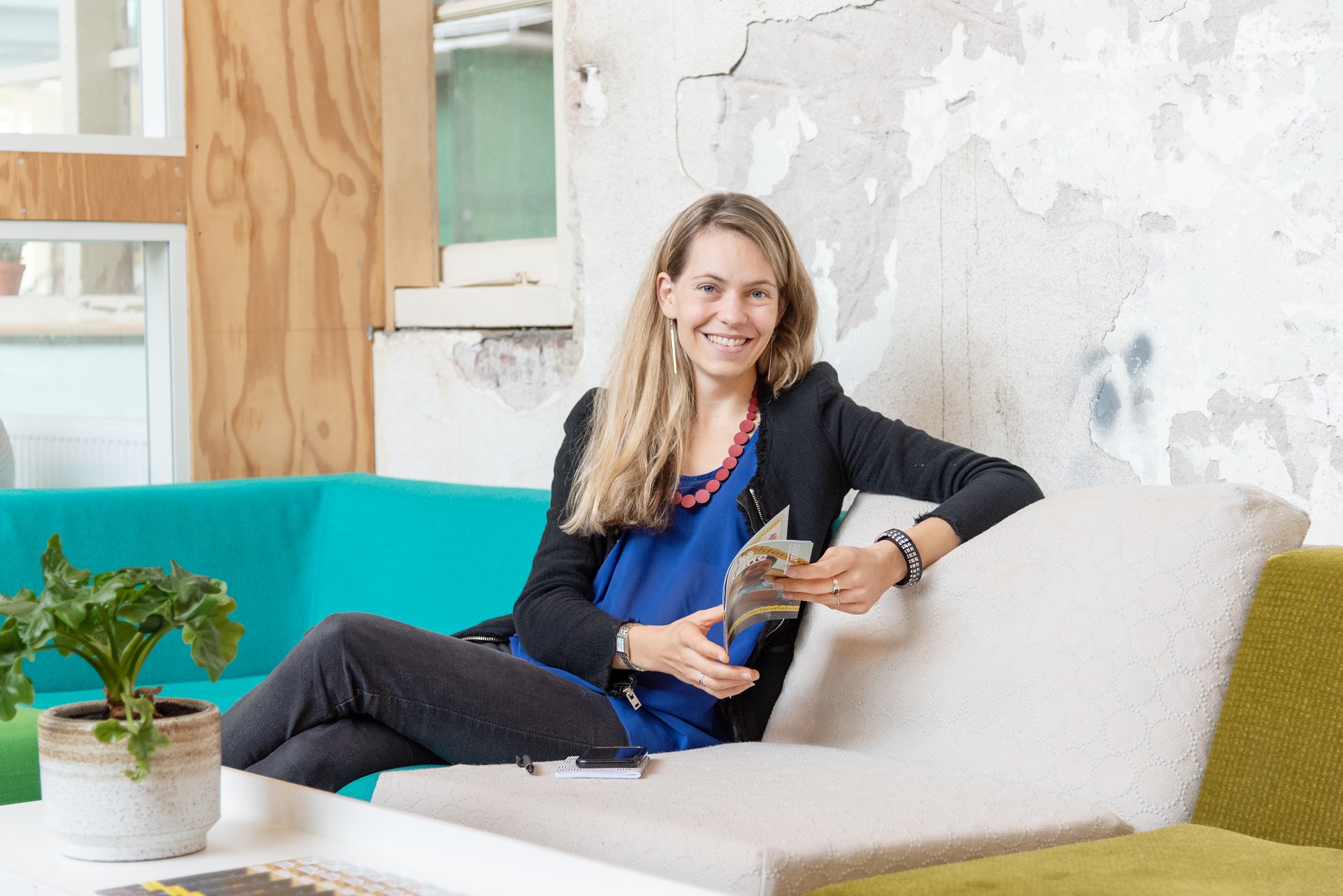The mindset of architects and designers is oriented towards creativity rather than business. Being artists by nature, they often find it draining to manage finances, paperwork, marketing, sales, and alike. Nevertheless, gaining insight into business processes is a must for achieving true success in the world of architecture and design. And luckily, there is a seasoned professional who can help with that in a way that is easy and enjoyable for creatives.
Meet Claudia Mayer — a business coach from the Netherlands. Claudia’s goal is to give designers and architects a roadmap for dealing with any sort of business challenge. After Claudia’s coaching, architects and designers no longer perceive the business and marketing side of their work as a burden. They start to approach it creatively and see it as a great opportunity for professional development. Which naturally leads to growing their businesses, attracting more clients, and landing more deals.
Inspired by the work Claudia does, the team of our architectural visualization company asked her for an interview. During our talk, we discussed Claudia’s career journey, her methods of teaching business and marketing strategies to creatives, the basics of SMM for designers and architects, and much more. Read and watch our interview with Claudia Mayer and learn the best tactics to make your architectural or design business thrive!
Hi, Claudia! To start off, tell us a bit about your career journey. What made you decide on your career path?
My journey started after studying business administration in Austria. I had an interest in creativity as well but just did not know how to combine these two. So, I got a marketing and business development job for a company called Zumtobel that did high-quality architectural lighting. First, I worked for them in Austria, then in Asia, China, and Singapore. And I noticed that I really loved working with architects and interior designers.
From Singapore, I moved to the Netherlands to Amsterdam to work in an architectural firm called UNStudio. It is quite big and a very international company. There, I had multiple projects in the capacity of a business developer. After two years, I followed one of my passions, which is coaching — motivating someone to reach their goals. I was thinking about what I can do with these new skills and my passion for creativity and design. And suddenly I realized that the most logical step was to start my own company as a business coach for designers. So that’s what I do right now. Also, for the last four years. I’ve been teaching in the program of creative business at a university in the Netherlands.
Is there a particular feature that makes your approach unique so that designers and architects fall in love with it?
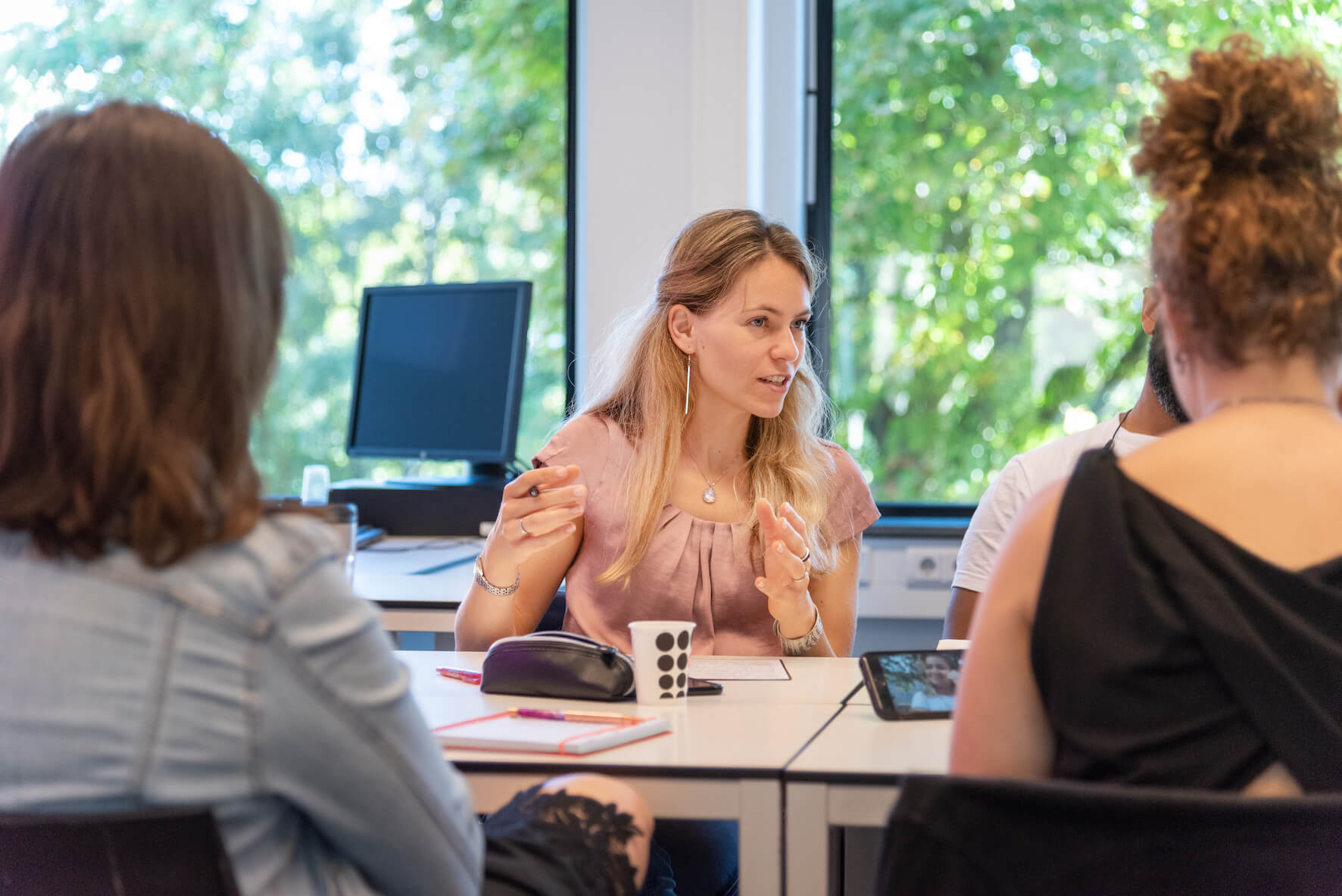
I’ve learned that most designers start from the passion to create, to do artwork, just like Archviz artists do. And sometimes having your own studio comes along as a logical step of growth. The business, however, is not necessarily the thing that designers and creatives like to do. That’s why I basically tweaked my approach to coach designers for the principles of positioning, marketing, and sales — but in a very playful and creative way. For instance, that could mean drawing, brainstorming in a mind mapping environment of Miro. So I can make it easy for architects and designers to do business work that, of course, needs to be done. And I make it very approachable for creatives.
I coach designers for the principles of positioning, marketing, and sales — but in a very playful and creative way.
What a creative, highly qualified interior designer or architect needs to become a successful business owner? Are there particular steps they need to take?
A good question! Yes, there are logical steps. And it is also, of course, an iterative process. There might be some back and forth based on learning. Because only if you go out and share who you are and what you do, you can then iterate and improve your pitch.
I love the simple morals of Simon Sinek. It is about the Golden Circle that reminds us to share the drive and passion about why we do the work we do to connect. Because after all, even if you work for a company, it is still a human-to-human business. In a service like design, it’s providing a service that is always based on trust. And it’s very important to connect with the person you serve.
So the first step is to look inside and to answer very clearly why you do what you do and what your work approach is. It is the inner circle. And the outer circle is what you do. It’s the easiest to define — for example, interior design. But then you should figure out: how do you do it differently and why do you do it, what drives you, what is your vision? Once you are very clear about your profile, it can be articulated in a very strong pitch — the one you’d put in LinkedIn in your headline. Be very clear about who you are but also connected with whom you serve.
Once you are very clear about your profile, it can be articulated in a very strong pitch.
Another crucial point is your Value Proposition Canvas. One-page canvas is the core of the business model. In short, it explains how you as an interior designer solve the problem of your clients. It’s a connection of how interior design brings your client a step forward. That is a value proposition already connecting your skills and expertise with the needs in the market. And then, of course, there is the question of how to market it, how to approach the right people, being clear to define the target niche, establishing relationships built on trust, and serving your clients. That is the marketing and the sales part.
You say designers and architects need to think about the distinguishing feature that makes them stand out. And once they have decided on that, what would be the means to share this information?
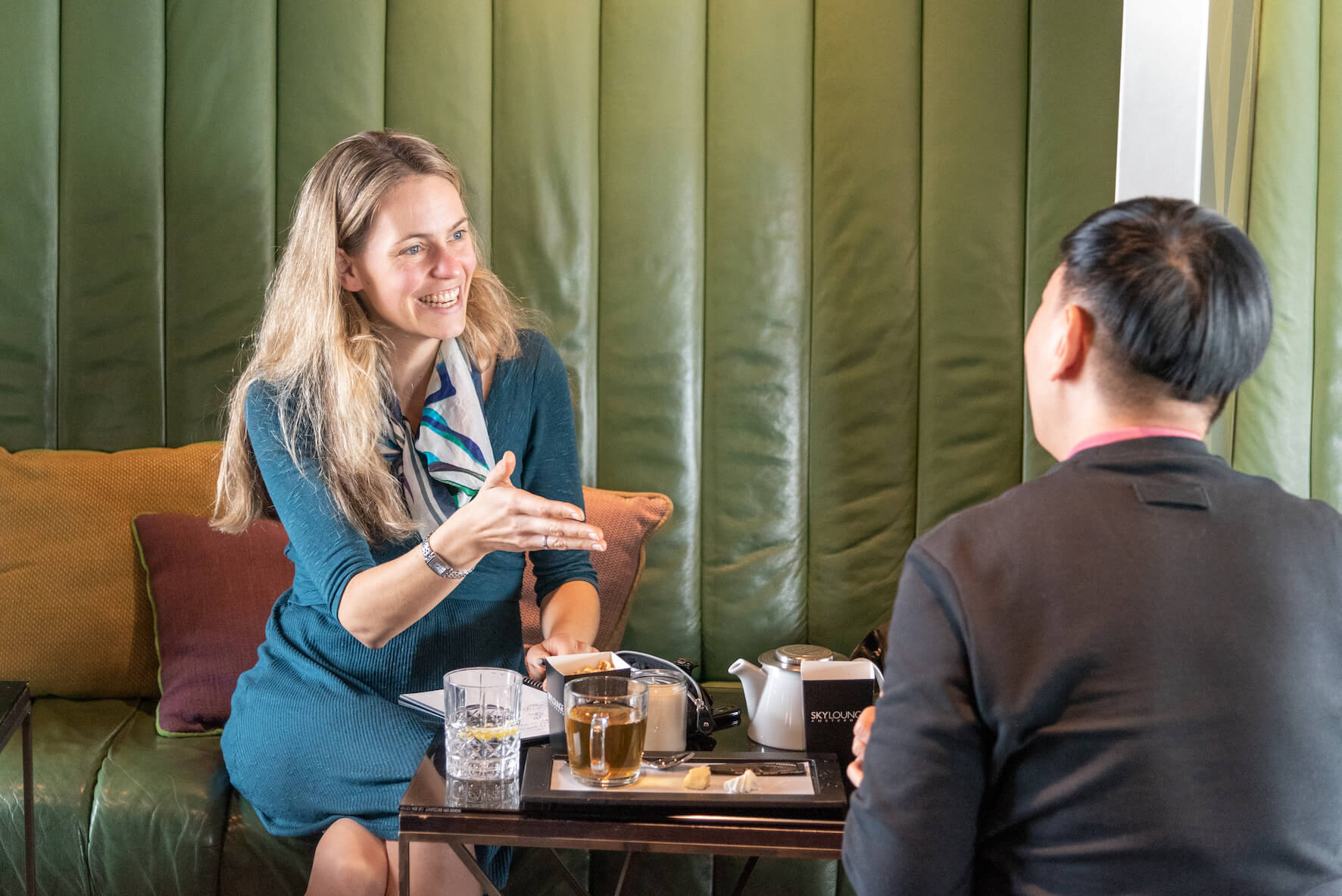
Yes, being clear about how you differentiate yourself is an absolute must. Because there are a lot of designers and generally service providers in any profession. It’s essential to start with this first step, to look inside, to be clear about your profile because there lies an answer about how you are different, how is this relevant to your client, what is the added value that you have as an interior designer.
The next logical question is where and how you can create this right relationship with your clients. If, for example, you are an interior designer for the hospitality industry, the chances are quite high that the decision-makers of such companies, let’s say, design manager or marketing manager, are on LinkedIn to do the job and connect.
Would you agree that LinkedIn is one of the best means to reach out to people? And if yes or no, then why?
It’s always crucial to think not where you want to be and which platform is most fun, visual, and inspiring. It’s good for your private time, not work. The crucial question is: “Where are my clients?”. If you are where your clients are, then you are visible, present, you can start a dialogue, share your work. And that’s already a hint about the services that ArchiCGI provides, for example. So yes, if you serve business clients, LinkedIn is your No 1 online option to reach them. Of course, offline events, like trade fairs, etc, are also valuable.
If you serve business clients, Linkedin is your No 1 online option to reach them.
Are there any tips you could give to designers and architects to manage their LinkedIn profiles to target the right audience and stand out?
That’s a very important topic. LinkedIn is our active business card, networking platform. And naturally, we think we should show there what we do and who we are. The first logical step could be to fill in the official role that you have in your email signature. The designation that was on a vacancy, or a job profile. But probably it is not very interesting or relevant.
Let’s say I’m a potential client that has the budget for a villa in Spain. And I am looking for an interior architect. Then it’s essential for me to get the feeling like: “Oh, this person is for me, that is exactly someone that I click with, we are on the same page”. So if you just put “interior architect”, I cannot connect with that. It’s just a description of what a person does. But what if your headline says, for example, “Specialized architect for second home dream villas in minimalistic style”? Then I feel: “Wow, that’s for me”. It means it’s not an architect for everyone.
To sum up, put yourself in the shoes of your ideal client. And even though you might think: “Sure, but Claudia I don’t serve these clients yet”, put yourself in the shoes of whom you’d love to serve. Describe what you bring to the table and which kind of dream you realize as an architect or designer.
Describe what you bring to the table and which kind of dream you realize as an architect or designer.
So let’s say we have our LinkedIn profile and we know features that differentiate us in the market. What do we do with that? How do we approach advertisement, marketing, and reaching out to our potential clients?

Architectural and design services are provided based on briefing and trust in an architect to design a dream home or whatever is requested. I think it is very important to build this trust on expertise. If we go back to the example of the architect specializing in second homes in minimalistic style, then it’s good to showcase how you work and also the results. Like, how you translate the client’s dream into a final building, this long way, the different stages of concepting and designing. So establish your expertise, showcase your workflow and the results you create, and build this trust.
Show how you translate the client’s dream into a final building.
Again, the most necessary skill is empathy, understanding which selection criteria this client with a minimalistic holiday home will have, and how he or she wants to be taken care of. If you are able to speak to your clients’ needs, if you know them, you can do it with different forms of media. It could be LinkedIn or a blog, different posts, visual materials, like architectural 3D animation, for example. It’s also possible to do a live, interactive viewing, with this new LinkedIn live streaming platform.
There are multiple ways but the question is always the same: “Who is your target client and how can you position yourself as the most trusted and the best designer to fulfill their dreams?”. Clients want to invest in architects and designers who really read their minds.
Are there some unified rules or tips that you could give in regard to planning content? Is there any universal approach that can be recommended without regard to the peculiarities and individuality of a designer or architect?
It’s a difficult question because I’m not sure there is a universal strategy to follow. It depends heavily on whom you serve. For sure, what is in common is that no matter whom you serve, your client is always a human being. And human beings have certain kinds of needs. So, you need to understand the needs of this holiday home owner or project director for a new huge hotel in a metropolitan city. After all, no matter if you have businesses as clients, or a family, or a corporation, they all have certain goals in their minds.
Let’s take a new luxury hotel location as an example. The person responsible for this project, a director, has certain KPIs. To understand how you can become a trusted design partner with this client and create a successful project together, you have to ask through what are their true needs. It is a super useful skill. Because very often, like with minimalistic style, we have different views of this term. You can think of one vision, my colleague will have another, etc. So, it’s better to ask this through in a one-on-one live session.
Generally, I would advise you to post what you’re good at and show your expertise with multiple strong visual stories. Tell the audience why you serve this niche and how you do that. But keep in mind that this should lead to a one-on-one conversation. It probably starts in the direct messages, and ideally leads to, for instance, a Zoom call to better understand the specific needs. Because if a client mentions a term, a designer should ask what exactly they mean by it.
Once a client says: “It should have a beach feeling”, you need to find out what they envision and describe as a wow beach feeling. This is your main goal on any platform, be it physical like a fair or online like LinkedIn. You need to lead a client to personal conversation to connect, build trust, show expertise, and then land a project.
If a client mentions a term, a designer should ask what exactly they mean by it.
Do you think visual materials play an important role for designers and architects and why? And perhaps you think they sometimes rely more on descriptive means of communication rather than visuals?
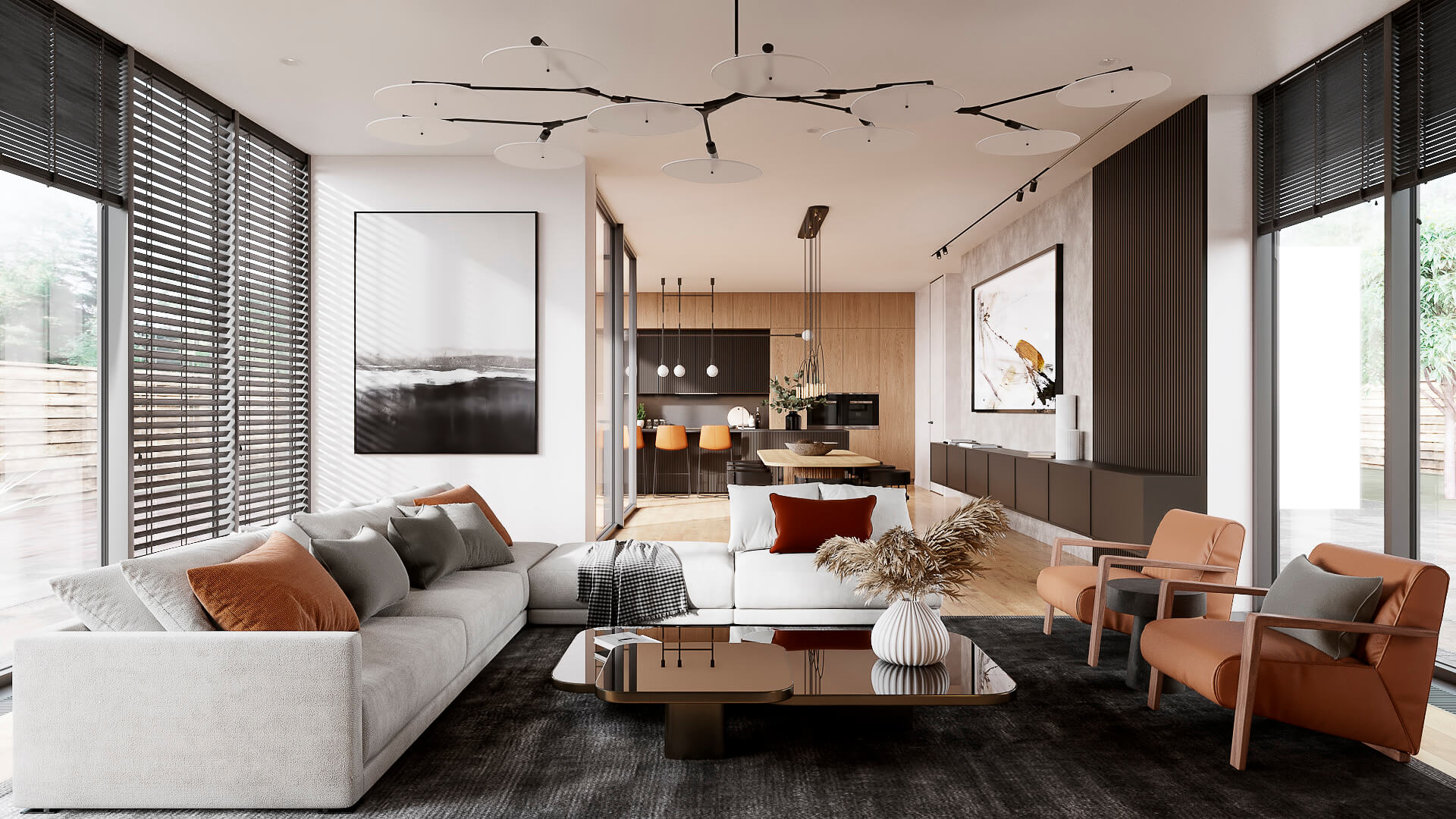
3D rendering by ArchiCGI studio
Why are visual materials useful? As human beings, we have two eyes. Research estimates that circa 80% of our perception takes place through vision. It is the most powerful and used human sense in our body. We process the world with our eyes. So we simply cannot underestimate visuals.
Of course, there are different types of visuals. They can be paper, digital, 3D, immersive ones like VR. For sure, visuals are crucial. As an example, they can show directors of a future hotel how their brand will be perceived in a new location. Or, make the owners of a minimalistic summer villa feel this “beach” living room atmosphere. It’s a very important way to make the concept in the mind of an architect tangible for the client.
At the beginning of a project, there are probably some sketches, but then the more the fidelity increases, the clearer the final concept is, the more you are able to immerse yourself in this building. This is how emotional bonding happens. It’s when you, as an architect, bring a client to the future reality while they are still here in the present. It is very powerful that photorealistic renderings can evoke the wow feeling this way. They can make people fall in love with the future.
Photorealistic renderings can make people fall in love with the future.
About the right balance between text and images. Different types of people process information in different ways. So I think it’s not good to only focus on visuals as you will lose those clients who want facts. There are still people who focus on the numbers, who want to see and process text. So you should provide both, maybe giving some basic visual information and text in the first place, and then elaborating more depending on what the client or the reader wants. You need visuals to catch the attention of the viewer and then you need text to explain what you mean by this image, what exactly caught their attention.
What do you think about CGI? Is it better or worse than photography or does each of them has its own advantages and disadvantages? What would you recommend using?
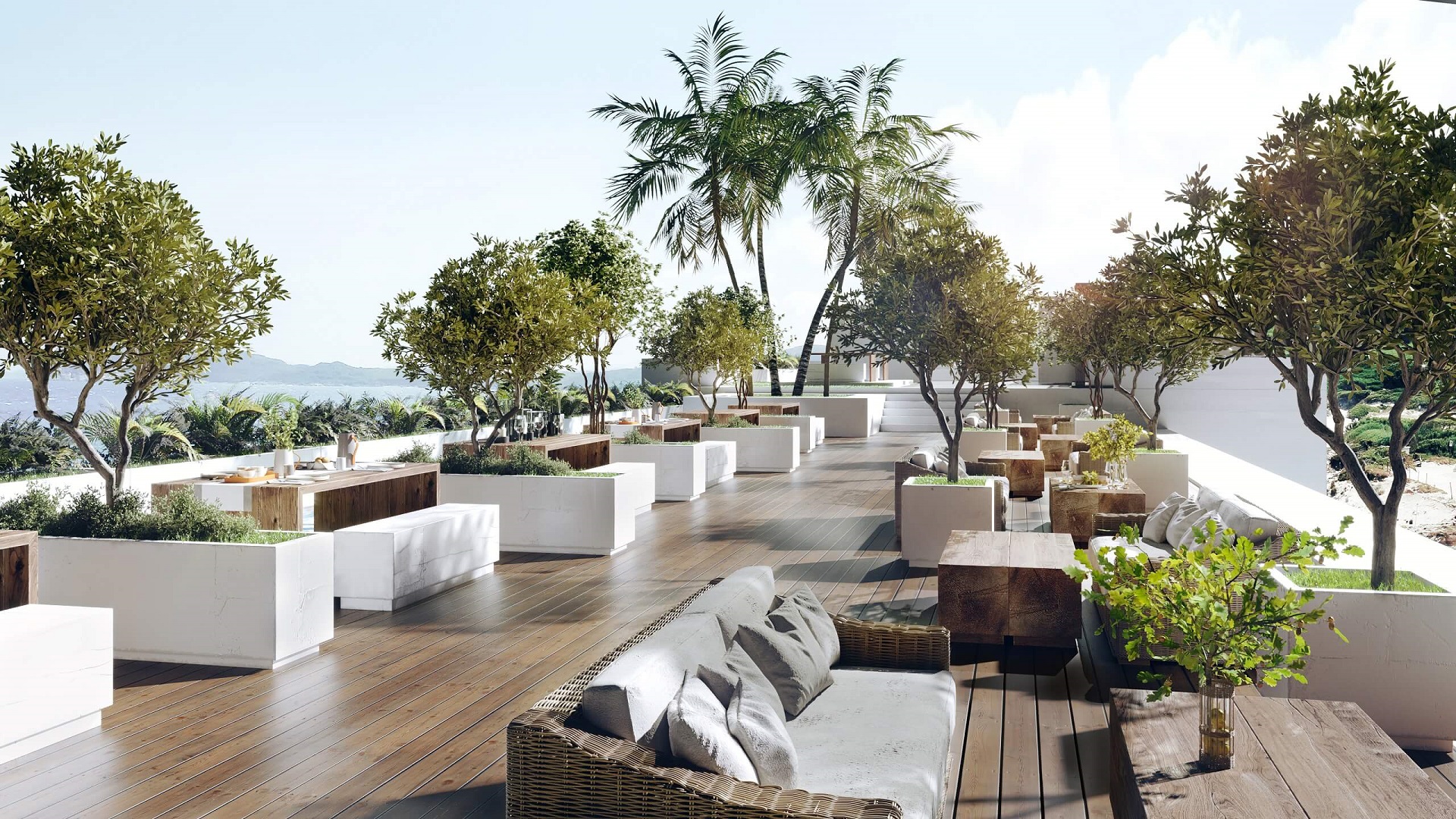
3D rendering by ArchiCGI studio
Yes, I think each has its own advantages and disadvantages. And I think a huge advantage, as your website says, is that CGI offers very fast delivery. In a way, I can imagine 3D interior design rendering services to be very useful in the design phase to eventually try different directions, and then have, for instance, 3 options, to show them to clients and ask what really speaks to them. CGI is irreplaceable for making ideas tangible in the design stage and to be crystal clear with the client — is that what they are looking for?
CGI is irreplaceable for making ideas tangible in the design stage.
If it’s a real estate developer with investors looking for buyers, it can be very powerful to have a rendering to show a realistic version of the future for marketing purposes. Of course, it is not possible to photograph because the building is not there yet. It is a future scenario. And I think once the building is built, it can be very powerful to do high-quality photography to show like wow, now this is a real building with real people, real cars, plants, etc.
Which, again, can be used as proof that 3D rendering for real estate developers is very similar to a photograph. And if we talk about deeper patterns of trust, you can show how you translate clients’ ideas into architectural design, and then it is almost 100% like the initial rendering. So I can say that CGI and photography can be useful in different stages of the project. In the final stage, it’s always best to have a real photo to show the real result in a real location.
Showcase your architectural project like a true work of art, brought to life with cutting-edge AI-powered CGI technology.
I think CGI should be a part of the architectural toolkit. Maybe in the beginning it is a static image, and then in the future, we will have a room where we will display that design on walls. I am sure VR brings many opportunities.
Is there anything that helps you stay motivated, drives you, helps you succeed? If there was only one message to deliver to your partners, your clients, people that work with you, what that one piece of advice would be?
That’s quite a challenge! I will share my life motto with you and hopefully, it will inspire your readers. My motto is: “Go for progress, and forget perfection”. I mean that, of course, I know that architecture needs perfection in planning and calculation. But that’s not what I mean. What I mean is to not let yourself hold back. Because in your mind you have this perfect version of where you need to be with your company and your career.
And then if your next step is not matching what you have in mind with your perfect picture, you say it is too difficult, too complex, and it’s not perfect. You can use it as an excuse like yeah, that’s too complicated, and there are so many people who do it better. It’s so easy to do that. I did it and sometimes it still happens. But I do not allow this to myself because I have a motto to go for progress. Whenever I see myself thinking about this “too complicated” thing, I say: “No, Claudia, you commit to progress”.
Go for progress, and forget perfection. Progress means every day a little step further.
Progress means every day a little step further. And it allows me to keep the perfect version that I have in mind and do it step by step in learning. This progress leads you to where you want to go. It is the compass that leads you to the future.
We totally agree! And we are sure the readers of this interview are going to get inspired by these words.
Our team thanks Claudia Mayer for the insightful conversation and wishes her huge success with her ongoing and future projects.
You can also find our interview with Claudia in the video format below. Watch and enjoy!
Need mind-blowing 3D visuals of your designs to enhance your presentations and marketing campaigns? Contact us for CGI services and get CG images of impeccable quality!
Catherine Paul Catherine is a content writer and editor. In her articles, she explains how CGI is transforming the world of architecture and design. Outside of office, she enjoys yoga, travelling, and watching horrors.
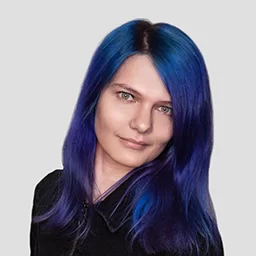
Content Writer, Editor at ArchiCGI


